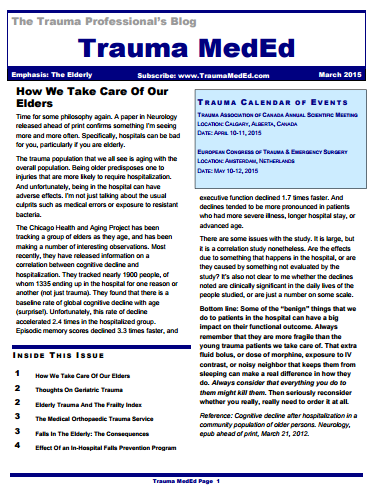Simple penetrating injuries to the arms and legs are often over-treated with invasive testing and admission for observation. Frequently, these injuries can be rapidly evaluated and disposed of using physical examination skills alone.
Stabs and low velocity gunshots (no rifles or shotguns, please) should be thoroughly examined. This includes an examination of the entire, unclothed body. If this is not carried out, there is a risk that additional penetrating injuries may be missed.
For gunshots, look at the wounds and the estimated trajectory to try to demonstrate that the object stayed clear of neurovascular structures. This exam is imprecise, and must be accompanied by a full neurovascular exam and evaluation of the bones and joints. If there is any doubt regarding bony involvement, plain radiographs with entry markers should be performed. Any abnormal findings will require more in-depth evaluation and inpatient admission.
If the exam is negative but the trajectory is “in proximity” to a major vessel, an arterial pressure index (API) should be measured. This test involves the calculation of the ratio of the systolic pressure in the injured extremity to the contralateral uninjured extremity. It should not be confused with the ankle brachial index (ABI) which compares the systolic pressure in the ipsilateral uninjured arm or leg.
The magic ratio is 0.9. If the API is less than this, there is some likelihood that a vascular injury is present. If the API is higher, there is virtually no chance of injury.
The final test that must be performed before discharge is a function test. If the injured extremity is too painful to use or walk on, the patient may need to be admitted for pain management and therapy. Patients managed in this way can avoid arteriography, CT angiography or admission and save thousands of dollars in hospital charges.
Reference: Journal Am Coll Surgeons 2009;209:740-5.



